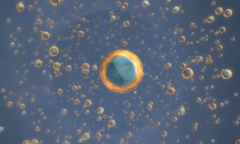By KM Diaz, | May 05, 2017

The 3.4 km (2.1 mi) long XFEL can provide a pulsing laser light with a wavelength of 0.8 nm at one pulse per second. (YouTube)
The European X-ray Free Electron Laser (XFEL), which is the world's biggest X-ray laser, has generated its first light in Hamburg, Germany.
The 3.4 km (2.1 mi) long XFEL can provide a pulsing laser light with a wavelength of 0.8 nm at one pulse per second. But when it is operating properly, it can generate for up to 27,000 pulses per second, which is considered to be an improvement over the past maximum of 120 per second.
Like Us on Facebook
The synchrotron is the principle of a free electron laser, it is an atomic accelerator that produces high-intensity electromagnetic radiation by stimulating electrons to relativistic speeds, and then, they are delivered into special magnetic structures. But, the XFEL is said to be a billion times more brilliant compared to standard synchrotron.
The 2.1 km (1.3-mi) long superconducting linear accelerator is the key component. Upon entering a photon tunnel with 210-m (689-ft) of X-ray generating devices and 17,290 permanent magnets termed as "undulators," electron pulses will be accelerated to near the speed of light and will have very high energies.
The electrons will be then twisted out from the straight line, and they bend to give off energy similar to an overloaded truck, but only in the manner of extremely short-wavelength X-rays.
The laser can be transmitted to several research stations in an underground laboratory hall, where various operations can be conducted at the same time. That means, more projects can be managed instantly by every researcher with more beamtime rather that the currently available overbooked facilities.
Since XFEL contains the wavelength of the diameter of an atom, the researchers say it could present new insights in the nanocosmos and a greater knowledge of organic molecules that may lead to advanced medical treatment and diagnosis. Moreover, the laser could be utilized to simulate conditions of planetary interiors and provide a more effective chemical process.
-
Use of Coronavirus Pandemic Drones Raises Privacy Concerns: Drones Spread Fear, Local Officials Say

-
Coronavirus Hampers The Delivery Of Lockheed Martin F-35 Stealth Fighters For 2020

-
Instagram Speeds Up Plans to Add Account Memorialization Feature Due to COVID-19 Deaths

-
NASA: Perseverance Plans to Bring 'Mars Rock' to Earth in 2031

-
600 Dead And 3,000 In The Hospital as Iranians Believed Drinking High-Concentrations of Alcohol Can Cure The Coronavirus

-
600 Dead And 3,000 In The Hospital as Iranians Believed Drinking High-Concentrations of Alcohol Can Cure The Coronavirus

-
COVID-19: Doctors, Nurses Use Virtual Reality to Learn New Skills in Treating Coronavirus Patients










